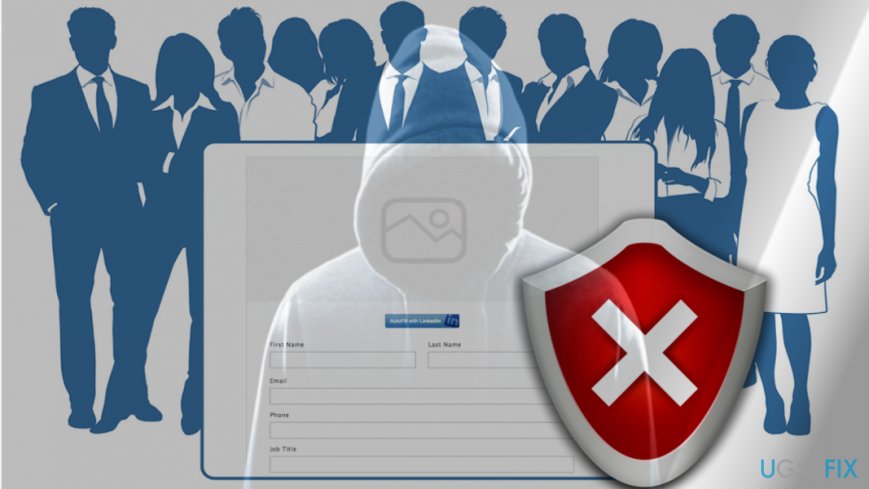LinkedIn AutoFill plugin might have exposed user profile data to hackers

Facebook's data security scandal[1] is currently being put into the shade by LinkedIn's AutoFill flaw, which possibly exposes users' personal information to third-party websites.
LinkedIn, a social network from professionals that belong to Microsoft since 2016, has been considered as one of the most professional social networks on the web that does not depart from its initial purpose. However, it did not manage to evade the scandal of a data breach. On April 9th, 2018 a researcher Jack Cable revealed[2] a severe flaw in LinkedIn's AutoFill plugin.
Dubbed as cross-site scripting (XSS), the flaw might expose basic information from LinkedIn members' profiles, such as full name, email address, location, a position held, etc. to untrustworthy parties. Approved third-party websites that are included to LinkedIn's whitelist can render “AutoFill with LinkedIn” invisible, thus making LinkedIn members automatically fill in their details from the profile by clicking anywhere on the spammed website.
Cross-Site Scripting flaw allows hackers to modify website's view
Cross-Site Scripting or XSS[3] is a widespread vulnerability that can affect any app on the web. The flaw is exploited by hackers in a way they can easily inject content into a website and modify its current display view.
In case of LinkedIn flaw, hackers managed to exploit a widely used AutoFill plugin. The latter allows users to fill up forms quickly. LinkedIn has a whitelisted domain to use this functionality (more than 10,000 included in the top 10,000 websites ranked by Alexa), thus allowing approved third parties only to fill in basic information from their profile.
However, the XSS flaw allows hackers to render the plugin on the entire website making the “AutoFill with LinkedIn” button[4] invisible. Consequently, if a netizen that is connected to LinkedIn opens a website affected by XSS flaw, clicking on an empty or any content positioned on such a domain, unintentionally discloses personal information as if clicking on “AutoFill with LinkedIn” button.
As a consequence, the owner of the website can retrieve a full name, phone number, location, email address, ZIP code, company, the position held, experience, etc. without asking for visitor's permission. As Jack Cable explained,
This is because the AutoFill button could be made invisible and span the entire page, causing a user clicking anywhere to send the user's information to the website.
A patch for AutoFill flaw has already been issued on April 10th
Upon the founding, Jack Cable, the researcher who found the flaw, contacted LinkedIn and reported the XSS vulnerability. In response, the company released a patch on April 10 and limited a small number of approved websites.
Nevertheless, the LinkedIn Autofill vulnerability hasn't been patched successfully. After an in-depth analysis, Cable reported that at least one of the whitelisted domains is still vulnerable to the exploit allowing criminals to misuse AutoFill button.
LinkedIn has been informed about unpatched vulnerability, though the company did not respond. Consequently, the researcher made the vulnerability public. Upon revelation, LinkedIn's staff was quick to release the patch repeatedly:[5]
We immediately prevented unauthorized use of this feature, once we were made aware of the issue. While we’ve seen no signs of abuse, we’re continually working to ensure our members’ data stays protected. We appreciate the researcher responsibly reporting this, and our security team will continue to keep in touch with them.
- ^ Jake Doevan. Facebook's privacy scandal might accelerate the falling popularity. 2-Spyware. Virus and Spyware news.
- ^ Zack Whittaker. LinkedIn bug allowed data to be stolen from user profiles. ZDnet. 24/7 news coverage and analysis on the trends, technologies and opportunities.
- ^ Integrated Vulnerability Management. Acunetix. The leading web vulnerability scanner developers.
- ^ Brandon Vigliarolo. LinkedIn AutoFill bug could leak personal data to third parties and attackers. TechRepublic. IT decision-makers.
- ^ Luana Pascu. LinkedIn fixes major bug in AutoFill plugin. Hot for Security. Bitdefender's partner.



